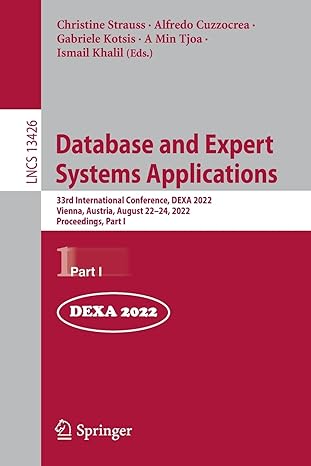Question
Please give solution for step 5 only Step 01: Requirements, Users, Initial Ideas Interface / System requirements - I am interested in the interface, not
Please give solution for step 5 only
Step 01: Requirements, Users, Initial Ideas Interface / System requirements - I am interested in the interface, not the backend so please focus on the user-facing components and don't get caught up in databases or things like that. Users, context, environment - who are your users? What is the environment and context in which they are operating? Do they have special needs? Tasks - what are the main tasks your users will be performing within the system? System Description - a general description of what you are going to build. Sketch - a physical sketch of what you're going to build. Paper, hand drawing of poor quality is fine. List of features, the design decisions that drove your plan to include them, and support from heuristics, guidelines, and other HCI principles to support your decisions. Step 02: Low-Fidelity Prototype I mean it when I say low fidelity. Don't try to turn in a half-made website or app for this. Do it on paper or use super basic materials if you are building an object. You should have your main features implemented on a paper prototype. Perform both a cognitive walkthrough, do a heuristic evaluation, and have one outside person work with your paper prototype (2 people must do this if you are in a group). Report out on your evaluation. Include a discussion of design points that need to be fixed in the next prototype, how you found them, and how you plan to change them. Include photos your paper prototype. Step 03: High-Fidelity Prototype Build a high-fidelity prototype, Using a refined list of tasks, have at least 2 people act as subjects as you perform a usability study with your prototype. Use two different observation methods. If you are in a group, you must have 4 subjects and use all three observation methods at least once. Conduct a post-test interview with each subject. This should not be a full report- we already know why you have your tasks. Instead, it should describe the protocol you used for the usability study, report on the observations and your analysis of the weaknesses, and list points you plan to improve moving forward. You will receive no points if you do not have a fully functional, bug-free prototype Do not show up with something half-done.
Step 05:Final Document Your final paper should have the following:
Description of your project - what did you build and what does it do. User Analysis - Who are your users, what is their context for interaction, what (if anything) is unique about their environment? Feature Analysis - What are the major features and why are they there? How do they serve your users Design Process - explain your prototypes, testing, and design evolution. Use the text you've already written, but polish it and make it fit nicely in this final report. Quantitative Evaluation - show the results from the in-class quantitative evaluation. How did you perform relative to others? Which tasks did you do well on? Which usability measures? Why do you think your performance was better/worse? What changes did you make as a result? Use statistical analysis where appropriate. Discussion - can you draw any generalizable conclusions for people designing for special populations? Does the paranormal present a particular challenge in interface design? Does the environment significantly affect design decisions in a way that would carry over into other domains?
Step by Step Solution
There are 3 Steps involved in it
Step: 1

Get Instant Access to Expert-Tailored Solutions
See step-by-step solutions with expert insights and AI powered tools for academic success
Step: 2

Step: 3

Ace Your Homework with AI
Get the answers you need in no time with our AI-driven, step-by-step assistance
Get Started


